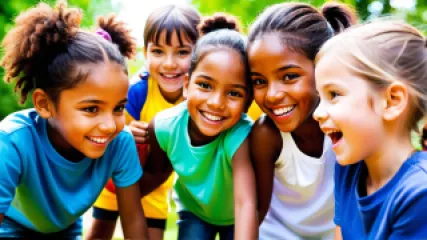10 Steps to Boosting Resilience in Childhood
In today's fast-paced and ever-changing world, resilience is a crucial skill for children to develop. Resilience allows children to bounce back from adversity, cope with challenges, and thrive in the face of obstacles. As parents and caregivers, it is our responsibility to nurture and encourage resilience in childhood. In this tutorial, we will discuss ten steps to boosting resilience in childhood.
Step 1: Foster a Supportive Environment
The first step in boosting resilience in childhood is to create a supportive and nurturing environment. Children thrive when they feel safe, loved, and accepted. Show your child that they can count on you by offering unconditional love, active listening, and support.
Step 2: Encourage Problem-Solving Skills
Teach your child problem-solving skills from an early age. Encourage them to think critically, explore different solutions, and make decisions independently. By allowing them to face and solve their own problems, you are helping them build resilience and confidence.
Step 3: Teach Emotional Regulation
Emotional regulation is an essential aspect of resilience. Help your child recognize and express their emotions in healthy ways. Teach them coping strategies such as deep breathing, counting to ten, or engaging in a calming activity when they feel overwhelmed.
Step 4: Promote Positive Self-Talk
Positive self-talk plays a significant role in building resilience. Encourage your child to replace negative thoughts with positive affirmations. Teach them to challenge negative beliefs and reframe them into empowering statements.
Step 5: Cultivate a Growth Mindset
A growth mindset is the belief that abilities and intelligence can be developed through effort and practice. Help your child develop a growth mindset by praising their efforts and emphasizing the importance of perseverance and learning from mistakes.
Step 6: Encourage Healthy Risk-Taking
Risk-taking is a crucial part of resilience building. Encourage your child to step out of their comfort zone and try new things. Provide opportunities for them to take calculated risks, learn from failures, and develop resilience in the face of setbacks.
Step 7: Foster Social Connections
Strong social connections are vital for resilience. Encourage your child to build healthy relationships with peers, family members, and mentors. Support them in developing empathy, communication skills, and the ability to seek help when needed.
Step 8: Teach Problem-Solving through Play
Play is a powerful tool for teaching problem-solving skills and fostering resilience. Engage your child in activities that promote problem-solving, such as puzzles, board games, and creative play. Allow them to experience challenges and find solutions in a safe and supportive environment.
Step 9: Model Resilience
Children learn by example, so be a role model for resilience. Demonstrate how you cope with challenges, setbacks, and stress. Share stories of your own experiences and highlight the strategies you use to overcome obstacles.
Step 10: Celebrate Effort and Progress
Finally, celebrate your child's efforts and progress in building resilience. Recognize their small victories and milestones along the way. By acknowledging their resilience-building journey, you are reinforcing their confidence and motivation.
Boosting resilience in childhood is a lifelong process that requires patience, consistency, and support. By following these ten steps, you can provide your child with the tools and skills they need to navigate life's challenges with confidence and resilience. Remember, every child is unique, so adapt these steps to suit your child's individual needs and personality.






